Remember when television executives seemed to have lost their collective minds? The 1980s were a magical time when network programmers apparently threw darts at a board covered in the most outrageous concepts imaginable, and somehow these wild ideas actually made it to our living rooms. Looking back, it’s amazing that some of these shows ever saw the light of day, let alone became cultural phenomena that we still talk about decades later.
1. The A-Team
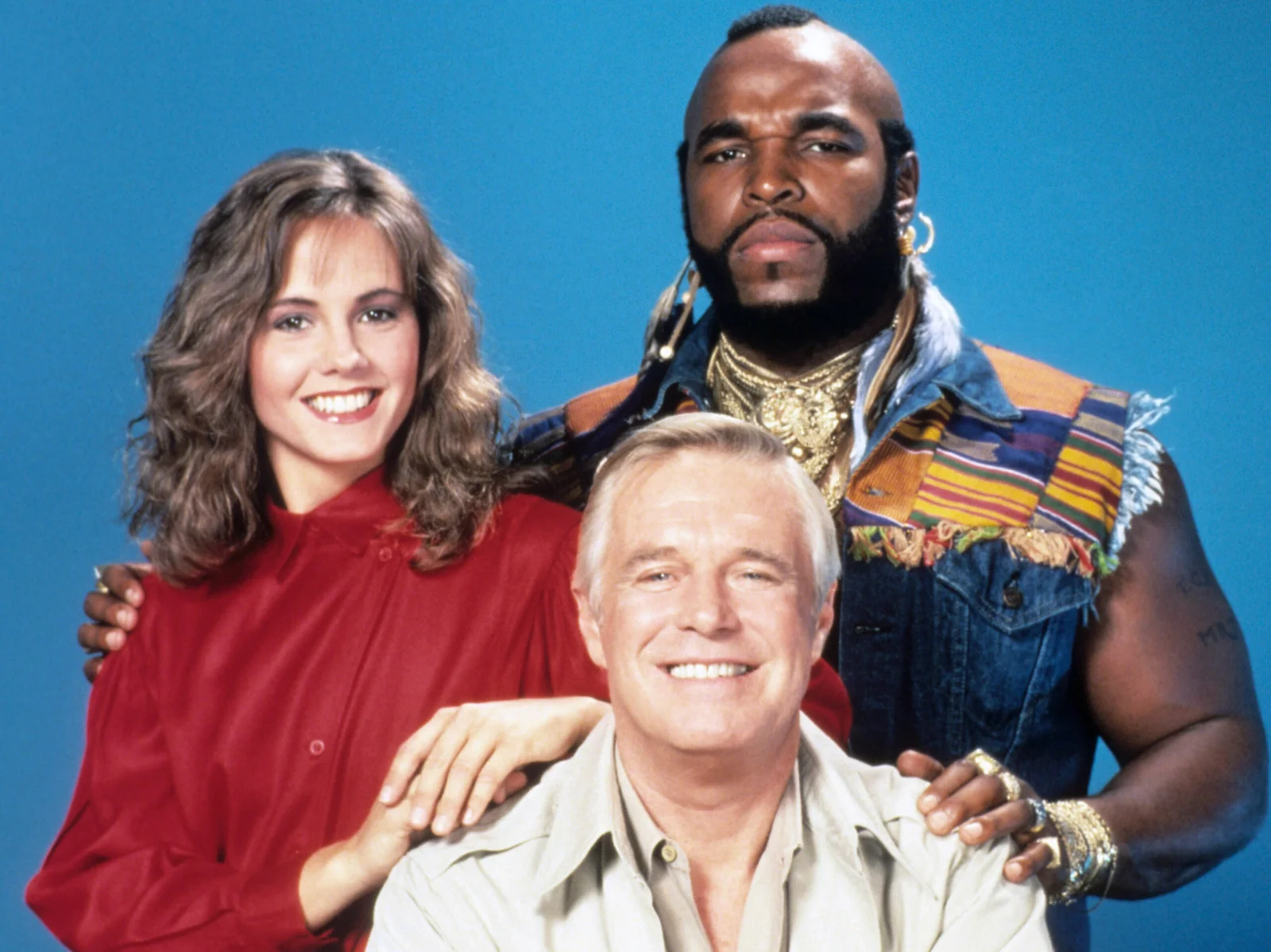
Who could forget the sight of Mr. T welding together a tank from spare junkyard parts while Hannibal Peck lit up another cigar and declared he “loved it when a plan came together”? This show asked us to believe that four Vietnam veterans could build military-grade weapons from household appliances and never actually kill anyone despite firing approximately 47,000 rounds per episode. The physics-defying stunts and the team’s ability to construct helicopters from shopping carts somehow made perfect sense in the Reagan era.
Watching B.A. Baracus fear flying while simultaneously being the team’s mechanical genius was pure television gold. The show’s commitment to wholesome violence—where machine guns were about as dangerous as water balloons—created a unique viewing experience that could only exist in the ’80s. Every week, we tuned in to see grown men solve complex problems by building elaborate contraptions and driving through walls, and we absolutely loved every ridiculous minute of it.
2. Knight Rider
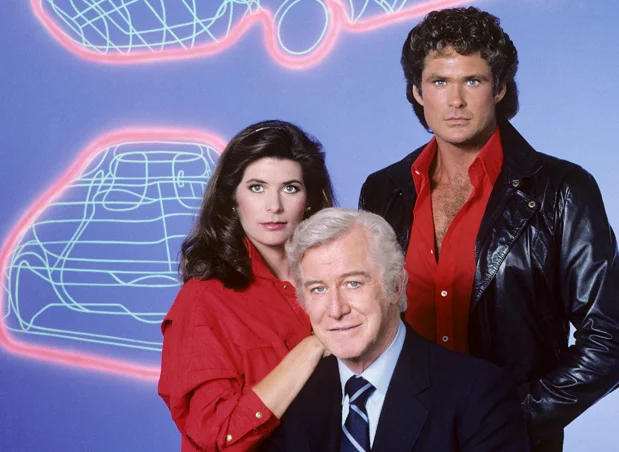
David Hasselhoff talking to his car wasn’t just accepted; it was the entire premise of a prime-time drama that ran for four seasons. KITT, the Knight Industries Two Thousand, was essentially a smartphone with wheels decades before smartphones existed, complete with an attitude problem and better hair than most of the human cast. The show asked us to suspend disbelief so far that we accepted a car that could think, talk, and apparently had better judgment than its human partner.
Michael Knight’s adventures behind the wheel of his artificially intelligent Trans Am captured our imaginations in ways that seem almost quaint today. The red scanning light on KITT’s front end became as iconic as any character on television, and somehow we never questioned why a crime-fighting car needed to be so sarcastic. Watching Hasselhoff have heart-to-heart conversations with his dashboard while cruising down endless highways perfectly captured the decade’s optimistic faith in technology.
3. The Dukes of Hazzard
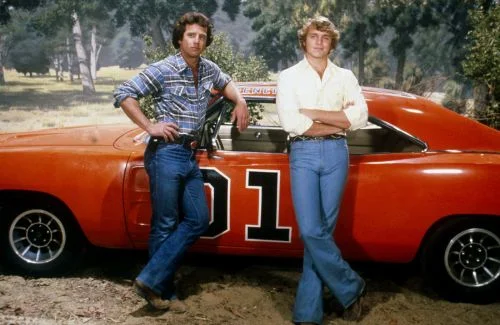
Two good ol’ boys jumping their orange Dodge Charger over every creek, barn, and law enforcement vehicle in Georgia became appointment television for millions of families. The Duke cousins’ weekly adventures in Hazzard County featured more airborne automobiles than a NASA launch schedule, and somehow their car, the General Lee, survived impacts that should have reduced it to scrap metal. The show’s commitment to car stunts was so intense that they reportedly went through hundreds of Dodge Chargers during the series run.
Beyond the automotive acrobatics, the show painted a picture of rural America where the biggest problems could be solved with charm, family loyalty, and a really good mechanic. Boss Hogg and Sheriff Rosco’s bumbling villainy provided the perfect foil for the Duke family’s moonshine-running past and their reformed present. The series managed to make law-breaking look wholesome, as long as you were fighting corruption and had really good intentions.
4. Manimal
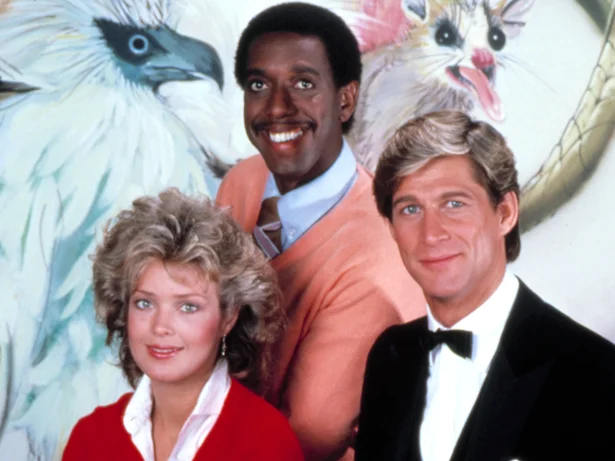
In a decade full of bizarre concepts, a British professor who could transform into animals whenever crime needed solving still managed to stand out as particularly odd. Dr. Jonathan Chase’s ability to become a hawk, panther, or snake at will was presented with the same straight-faced seriousness as any police procedural. The show’s special effects budget appeared to consist of dry ice, creative camera angles, and the hope that viewers wouldn’t look too closely during transformation scenes.
Despite lasting only eight episodes, Manimal left an indelible mark on ’80s television culture precisely because of its audacious weirdness. The concept was so wonderfully absurd that it became a touchstone for discussing television’s most ambitious failures. Watching a distinguished actor seriously portray a man who solved crimes by becoming a black panther was peak ’80s television, where no idea was too strange for prime time.
5. Automan
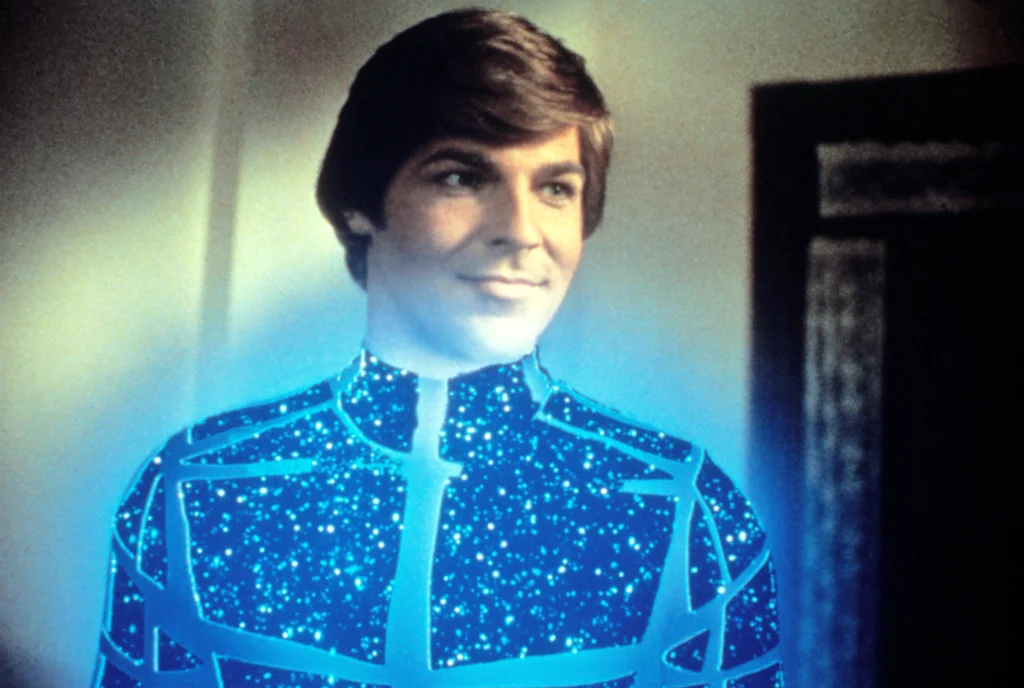
What happened when someone said “What if we made TRON, but as a weekly television series with a fraction of the budget”? Automan appeared, featuring a computer programmer who creates a holographic crime-fighting partner that looked like he’d stepped out of a disco ball. The show’s attempts at cutting-edge computer graphics now look charmingly primitive, but in 1983, watching a glowing man drive a glowing car was the height of futuristic entertainment.
Chuck Wagner’s portrayal of the artificial being trying to understand human behavior provided some genuinely touching moments between the chase scenes and laser effects. The program’s exploration of artificial intelligence and virtual reality was surprisingly ahead of its time, even if the execution involved a lot of sparkly outfits and synthesizer music. Automan represented television’s earnest attempt to capitalize on the computer revolution, complete with enough neon lighting to power a small city.
6. The Greatest American Hero
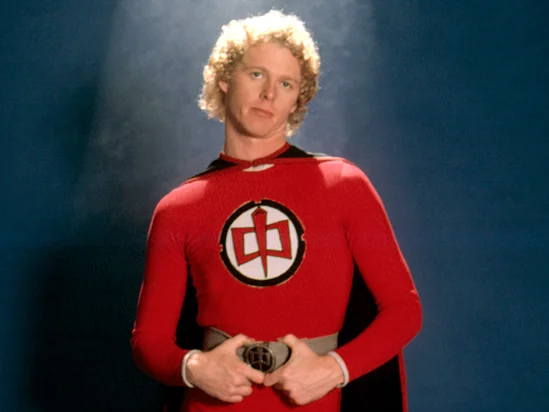
Ralph Hinkley receiving a super suit from aliens and promptly losing the instruction manual was a premise that perfectly captured the ’80s spirit of ambitious incompetence. William Katt’s portrayal of a substitute teacher stumbling through superhero duties while his suit’s cape got caught in revolving doors was both endearing and hilarious. The show’s theme song became more famous than the series itself, proving that sometimes a catchy tune can outlast even the most memorable television moments.
The series found comedy gold in the gap between superhero expectations and suburban reality, as Ralph struggled to master flying while dealing with junior high students and his FBI handler’s impatience. Watching him crash-land in garbage cans and accidentally use his powers at inappropriate moments made for television that was both aspirational and relatable. The show suggested that being a hero was less about perfection and more about good intentions, even when those intentions resulted in property damage.
7. Airwolf
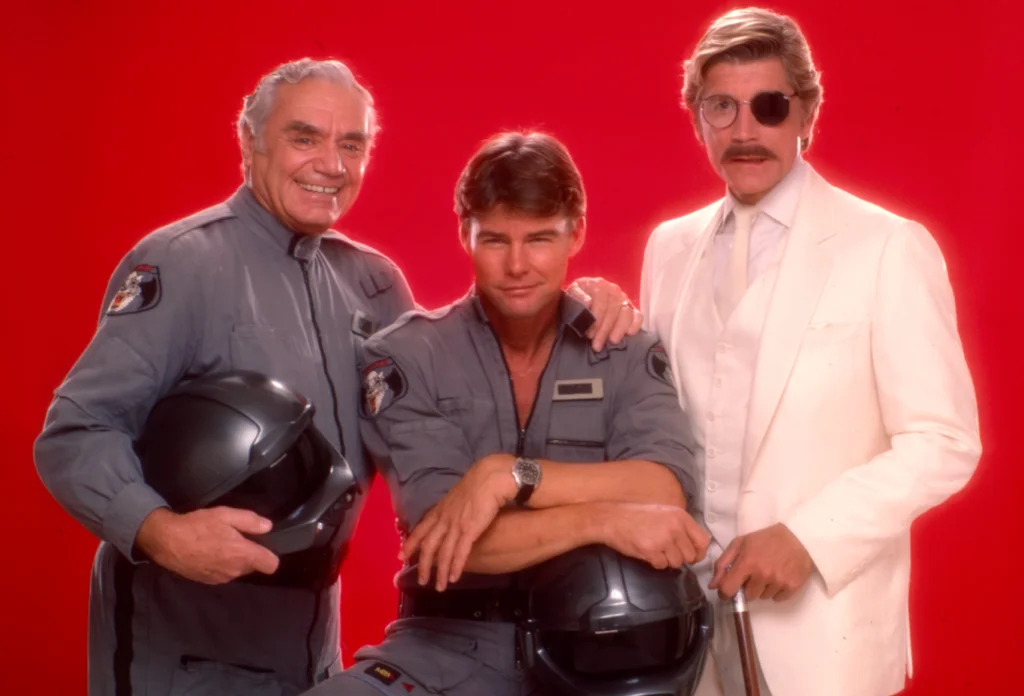
A rogue helicopter pilot stealing a billion-dollar military aircraft and using it to help people while hiding from the government was somehow considered a reasonable premise for family television. Stringfellow Hawke’s brooding intensity and his advanced attack helicopter created a unique blend of action and melodrama that only the ’80s could produce. The helicopter itself became as much a character as any human cast member, complete with its own theme music and personality.
The show’s combination of military hardware and emotional storytelling reflected the decade’s fascination with both technology and individualism. Ernest Borgnine’s Dominic provided the perfect counterbalance to Jan-Michael Vincent’s tortured hero, creating a surrogate family dynamic amid all the missile launches and aerial combat. Airwolf proved that audiences would accept almost any premise as long as it involved impressive machinery and heroic intentions.
8. V
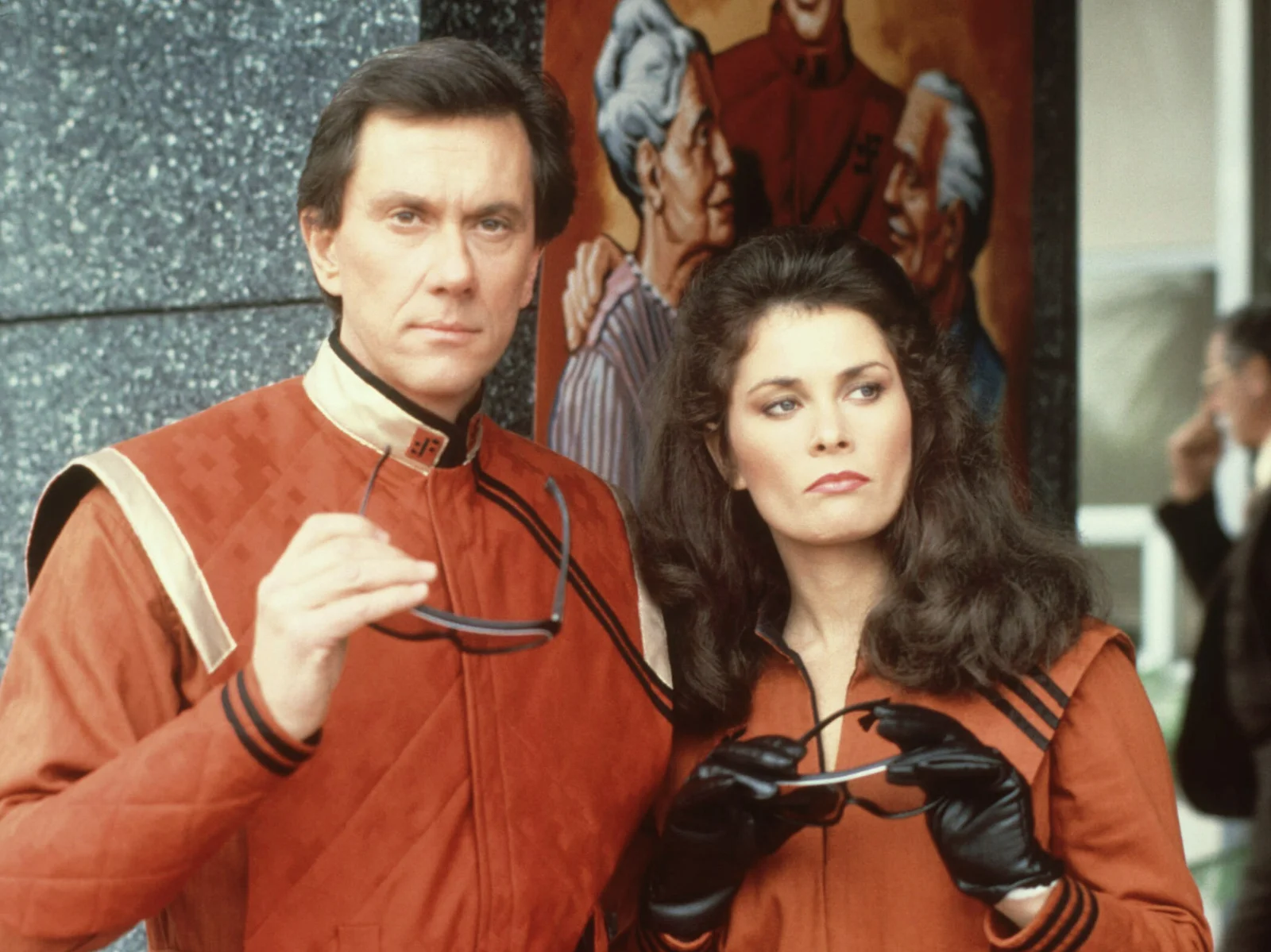
Giant lizard people disguising themselves as beautiful humans to harvest Earth’s water and population was presented as a serious science fiction drama rather than the campy adventure it sounds like today. The miniseries’ success spawned a weekly series that asked viewers to invest emotionally in a resistance movement fighting aliens who literally ate people. The show’s rubber-mask special effects and dramatically revealed reptilian features became iconic images of ’80s television science fiction.
Beyond the creature effects, V tackled themes of fascism and collaboration with a surprising amount of depth for a show about space lizards. The series used its alien invasion premise to explore very human questions about resistance, survival, and moral compromise during wartime. Watching characters choose between safety and principle while dealing with visitors who might literally be cold-blooded gave the show an urgency that transcended its B-movie roots.
9. Sledge Hammer!
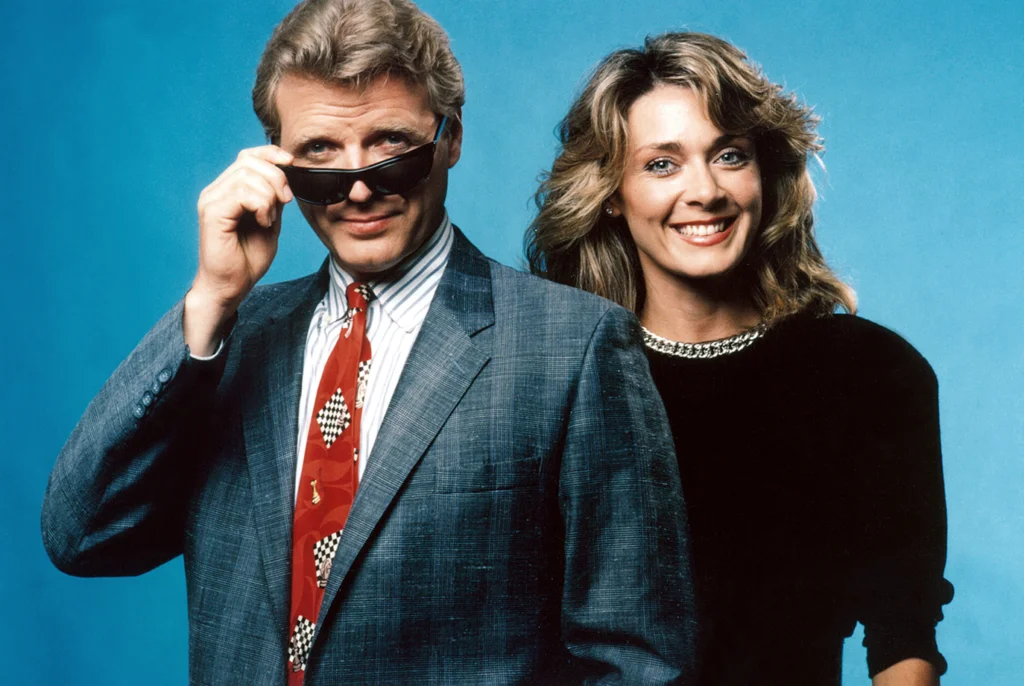
A police detective whose best friend was his gun and who spoke to it regularly was somehow considered suitable for prime-time comedy. David Rasche’s portrayal of the title character took every tough-cop cliché and pushed it beyond parody into a realm of pure absurdist humor. The show’s willingness to destroy entire cities in season finales and treat violence as slapstick comedy created a unique viewing experience that walked the line between satire and celebration.
The series served as both a parody of and tribute to the decade’s fascination with anti-hero law enforcement, taking Dirty Harry-style policing to its logical extreme. Sledge’s conversations with his revolver and his complete disregard for department policy made for comedy that was simultaneously silly and surprisingly sharp in its social commentary. The show proved that audiences were ready for television that questioned the very genres it was celebrating.
10. Street Hawk

A paralyzed police officer getting a second chance through an experimental motorcycle that could reach 300 mph was the kind of premise that made perfect sense in the ’80s technology boom. Rex Smith’s Jesse Mach splitting time between his day job and his secret identity as a high-tech vigilante created a superhero story grounded in then-current concerns about disability and technological advancement. The motorcycle’s various gadgets and weapons systems were presented with the same seriousness as any military briefing.
The show’s emphasis on redemption through technology reflected the decade’s optimistic belief that science could solve personal as well as social problems. Jesse’s journey from injured officer to cybernetic crime fighter offered hope that limitations could be overcome through innovation and determination. Street Hawk represented television’s faith in the transformative power of gadgets, even when those gadgets happened to be rocket-powered motorcycles.
11. Tales from the Darkside
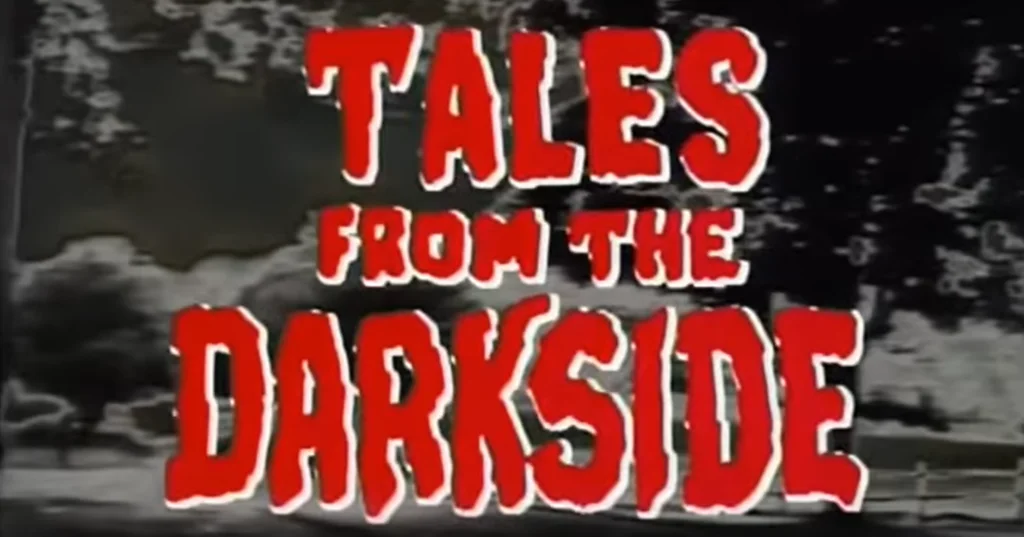
George Romero bringing horror anthology television to syndication resulted in a show that somehow made suburban families comfortable with weekly doses of supernatural terror. The series presented stories ranging from mildly unsettling to genuinely frightening, all introduced by a narrator who seemed to take personal pleasure in the upcoming unpleasantness. The show’s low budget actually enhanced its creepy atmosphere, proving that imagination often trumps expensive special effects.
Each episode’s twist ending and moral lesson wrapped in supernatural packaging created a modern version of classic horror traditions for the MTV generation. The series tackled everything from cursed objects to demonic possession while maintaining just enough camp to keep viewers from taking it too seriously. Tales from the Darkside proved that audiences were hungry for horror that came with a wink and a nudge, even when that horror occasionally gave them genuine nightmares.
12. My Two Dads

A teenage girl discovering that her recently deceased mother never revealed which of two men was her biological father became the foundation for a sitcom that somehow ran for three seasons. The premise asked audiences to accept that joint custody between two potential fathers was not only possible but could provide the basis for heartwarming family comedy. Paul Reiser and Greg Evigan’s characters navigating shared parenting duties while pursuing their respective careers created a unique family dynamic for television.
The show’s willingness to tackle non-traditional family structures was surprisingly progressive for its time, even if the execution leaned heavily on sitcom conventions and misunderstandings. Watching two grown men learn to cooperate in raising a teenager provided both comedy and genuine moments of emotional growth. My Two Dads represented television’s evolving understanding of what constituted a family, wrapped in enough humor to make the unconventional seem perfectly normal.
The 1980s gave us television that was unafraid to be ridiculous, optimistic, and utterly sincere about even its most outlandish premises. These shows remind us of a time when network executives were apparently willing to greenlight anything that sounded exciting in a pitch meeting, resulting in a decade of television that was uniquely creative and wonderfully weird. While we might laugh at these shows now, they represent a fearless approach to entertainment that we rarely see today, when focus groups and market research have replaced the wild swings that gave us talking cars, animal-transforming professors, and helicopter-flying loners with hearts of gold.
This story Ridiculous ’80s Series That Somehow Made It to Prime Time was first published on Takes Me Back.


